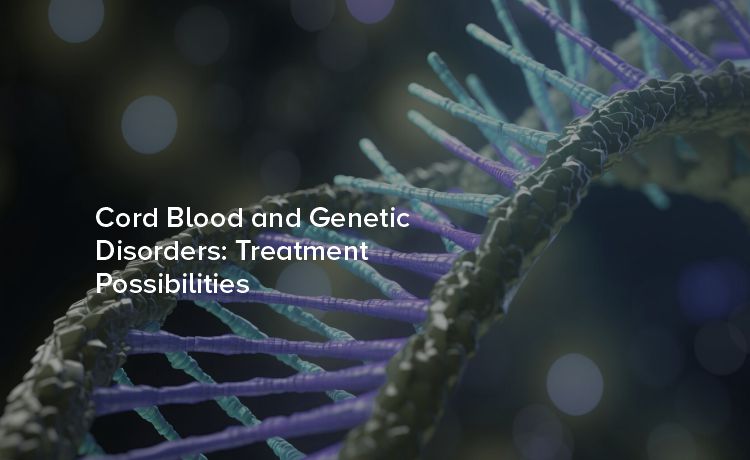
Cord blood, the blood collected from an infant's umbilical cord at birth, is a powerful resource in medical science. It is rich in stem cells, which have the potential to treat various diseases, including genetic disorders. Understanding the benefits and treatment possibilities of cord blood can be pivotal for parents and medical professionals alike.
Cord blood is the blood that remains in the umbilical cord and placenta after a baby is born. This blood is rich in hematopoietic stem cells, which are the building blocks of the blood and immune system. These cells can develop into any type of blood cell and are used in medical treatments for various conditions.
Cord blood collection is a simple and safe procedure that does not harm the mother or baby. It involves collecting the blood left in the umbilical cord after it has been cut, which is then stored in a cord blood bank for future use.
Cord blood stem cells can be used to treat genetic disorders by replacing or repairing damaged cells in the body. These cells have the unique ability to transform into different types of cells, including red blood cells, white blood cells, and platelets. This makes them incredibly valuable in treating genetic conditions that affect the blood and immune system.
For example, in conditions like sickle cell anemia and thalassemia, cord blood stem cells can replace the defective blood cells with healthy ones, effectively treating the disease. Similarly, in immune disorders such as severe combined immunodeficiency (SCID), cord blood can rebuild the patient's immune system, providing a cure.
Cord blood offers several advantages over other stem cell sources, such as bone marrow and peripheral blood. One major advantage is its availability. Cord blood can be collected at birth and stored for future use, making it readily accessible when needed.
Another advantage is the lower risk of graft-versus-host disease (GVHD), a condition where the transplanted cells attack the recipient's body. Cord blood transplants have a lower incidence of GVHD compared to bone marrow transplants.
Additionally, cord blood stem cells are more adaptable and have a higher proliferative capacity, meaning they can grow and divide more easily. This makes them highly effective in treating various genetic disorders.
Cord blood banking involves the collection, processing, and storage of cord blood for future medical use. There are two types of cord blood banks: public and private.
Public cord blood banks collect donations from the general public and make them available to anyone in need. These donations are typically used for research or for patients who do not have a matched donor in their family.
Private cord blood banks, on the other hand, store cord blood exclusively for the donor's family. This ensures that the stem cells are available for use by the child or a family member if needed in the future.
The process of cord blood banking begins with the collection of cord blood at birth. The blood is then transported to a processing facility, where it is tested, processed, and cryopreserved for long-term storage.
Sickle Cell Anemia
Sickle cell Anemia is a genetic disorder that affects the shape and function of red blood cells. Cord blood stem cells can replace the defective cells with healthy ones, providing a potential cure for the disease.
Thalassemia
Thalassemia is another genetic blood disorder that can be treated with cord blood stem cells. By replacing the defective cells with healthy ones, patients can achieve normal blood production and reduce the need for regular blood transfusions.
Severe Combined Immunodeficiency (SCID)
SCID is a life-threatening genetic disorder that affects the immune system. Cord blood stem cells can rebuild the patient's immune system, providing a potential cure for the disease.
The Future of Cord Blood and Genetic Disorder Treatment
The future of cord blood and genetic disorder treatment is promising. With ongoing research and advancements in medical technology, the potential applications of cord blood are expanding.
Gene Editing and Cord Blood
One exciting area of research is the combination of cord blood stem cells with gene editing technologies like CRISPR. This could potentially allow for the correction of genetic defects at the DNA level, providing a permanent cure for genetic disorders.
Personalized Medicine
Cord blood also holds promise for personalized medicine, where treatments are tailored to the individual's genetic makeup. By using the patient's own cord blood stem cells, doctors can develop customized treatments that are more effective and have fewer side effects.
Expanding Treatment Applications
Researchers are continually discovering new ways to use cord blood stem cells to treat a broader range of conditions. This includes not only genetic disorders but also autoimmune diseases, neurological disorders, and even some types of cancer.
Deciding whether to bank your child's cord blood is a personal decision that depends on various factors. It's essential to weigh the potential benefits against the costs and consider your family's medical history.
Cord blood banking can provide peace of mind knowing that you have a readily available source of stem cells for potential future medical treatments. It can also offer a unique opportunity to contribute to medical research if you choose to donate to a public bank.
If your family has a history of genetic disorders or conditions that can be treated with cord blood, banking your child's cord blood may be a wise decision. Discussing your options with a healthcare provider can help you make an informed choice.
Cord blood is a valuable resource with the potential to treat a wide range of genetic disorders. Its advantages over other stem cell sources make it a promising option for medical treatments. With ongoing research and advancements in medical technology, the future of cord blood and genetic disorder treatment is bright.